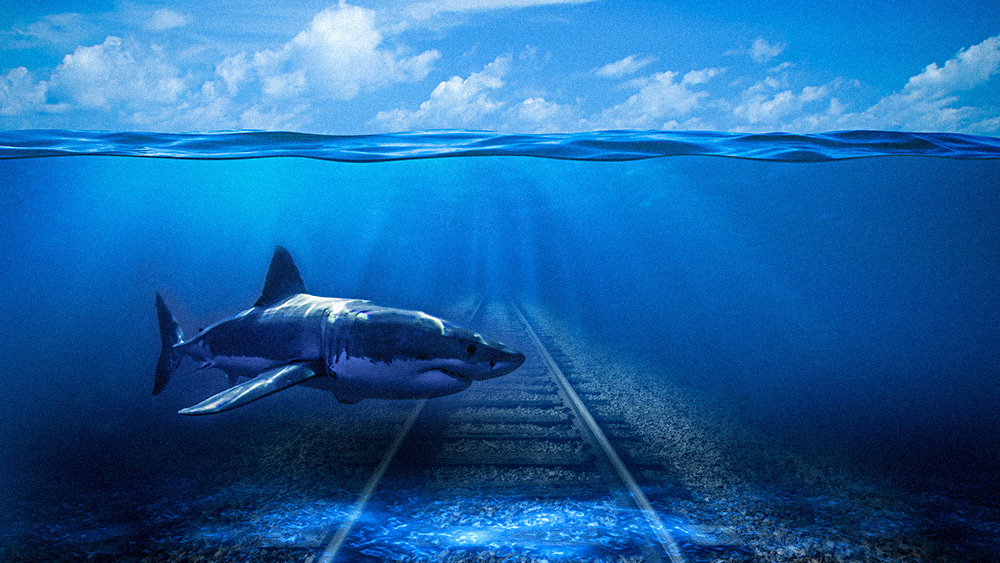
Researchers from Australia have discovered a shark graveyard in the Indian Ocean, including a tooth that belonged to the ancestor of megalodon.
The fossilized tooth of what is believed to be a 40-foot-long ancestor of the megalodon has been found in a mix of more than 750 fossilized teeth. The research team from the Victoria Research Institute made the astonishing find at a depth of 18,000 feet.
This voyage was one of two biodiversity surveys of Australia's newest marine parks and was carried out by experts on the Commonwealth Scientific and Industrial Research Organization (CSIRO) research vessel.
The shark graveyard was discovered around the Cocos (Keeling) Islands in the Indian Ocean and the Gascoyne Marine Park offshore of Western Australia.
Dr. Glenn Moore, curator of Fishes at the Western Australian Museum and a member of the research team that made the discovery, said it was "amazing" that such an enormous number of teeth were gathered from a comparatively small area on the seafloor.
"The teeth look to come from modern sharks, such as mako and [great] white sharks, but also from ancient sharks – including the immediate ancestor of the giant megalodon shark," Moore said. "This shark evolved into the megalodon, which was the largest of all sharks, but died out about 3.5 million years ago."
The megalodon was one of the most vicious predators to have existed on Earth and ruled the seas 23 million years ago. While scientists put its length at 52 feet and weight at 61 tons, all that is known about it comes from incomplete remains like its teeth. (Related: Jaws on the beachfront: North Carolina man finds palm-sized MEGALODON tooth buried on the shore.)
Human knowledge is under attack! Governments and powerful corporations are using censorship to wipe out humanity's knowledge base about nutrition, herbs, self-reliance, natural immunity, food production, preparedness and much more. We are preserving human knowledge using AI technology while building the infrastructure of human freedom. Speak freely without censorship at the new decentralized, blockchain-power Brighteon.io. Explore our free, downloadable generative AI tools at Brighteon.AI. Support our efforts to build the infrastructure of human freedom by shopping at HealthRangerStore.com, featuring lab-tested, certified organic, non-GMO foods and nutritional solutions.
Researchers also discover new shark species
Aside from discovering the fossilized tooth and the shark graveyard, the Australian researchers also found a specimen of a new species of shark.
"Early in the voyage, we collected a striking small, striped horn shark. This species is unique to Australia, but it hasn't yet been described and named," said Dr. Will White of CSIRO.
According to the shark expert at CSIRO's Australian National Fish Collection, the collected specimen "will be incredibly important to science" because they will use it to describe the species.
Horn sharks, which include the famous Port Jackson shark, are usually slow-moving species found in shallow waters where they spend most of the day disguised among rocks and seaweed on the seafloor and come out at night to feed.
This new species lives in water over 490 feet deep and researchers know very little about its behavior. White said biodiversity surveys are always exciting because experts never know what they are going to discover.
"Australia has a truly enormous marine estate that's home to some of the most diverse marine life on the planet, but we still know very little about what lives beneath the waves. From the very first survey on this voyage, we've been making new discoveries and collecting data that will be vital in helping to protect and conserve the life in our oceans," he added.
Follow Discoveries.news for more news about the latest scientific discoveries.
Watch this video that explains how to survive a shark attack.
More related stories:
Scientists warn that the world's most unusual sharks and rays are on the "brink of extinction".
Sharks use Earth’s magnetic field like GPS, study suggests.
Great white sharks found to have extreme longevity.
Sources include:
Please contact us for more information.




















